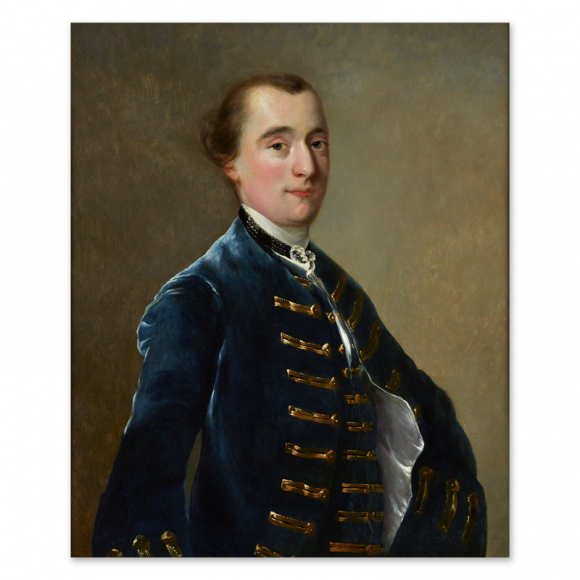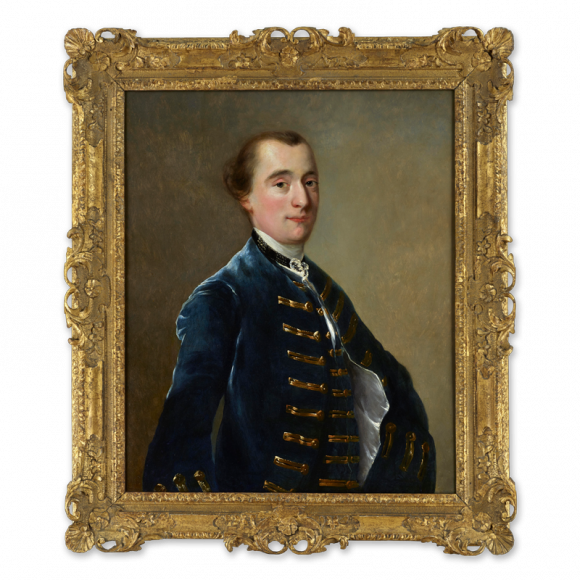Good 18th century carved and gilt wood English frame. Raised and pierced centres and corners.
Private collection, USA
This remarkably attractive early portrait by Wright must date from 1760 or 1761. Compositionally, of course, the painting reflects the teaching of Thomas Hudson, with whom Wright studied in the 1750s. But we can see here also the emergence of Wright’s particular appealing idiosyncrasies of portraiture. While Hudson’s faces are often indistinguishable from each other, Wright’s – as is the case with this present sitter - are recognizably 'real'. By 1760, Wright had learned all the lessons of the London drapery painters and he handles the sitter’s costume with great skill. The treatment of the gold-braiding is beautifully managed. The wonderfully superfluous opening of the coat revealing its satin lining is a hallmark of Wright who was at this stage beginning to chart his own individual path as a portrait painter – one who would pay enormous attention to the details of drapery and still-life in his pictures.
The identity of this young man is unknown. Unrecorded by Benedict Nicolson in his 1968 catalogue raisonné on Joseph Wright, it nevertheless can be fitted into the artist’s oeuvre by comparison. Perhaps the most obvious comparison stylistically is with Wright's portrait of William Pigot (see Benedict Nicolson, Joseph Wright of Derby: Painter of Light, London, 1968; Vol. II, plate 23), now in the public collection of Heritage Doncaster along with two other Wrights of the same family. Although in three-quarter-length format, Pigot is presented by Wright with an identically opened jacket and virtually identical braiding on his coat. Nicolson gives Pigot’s sitting as 1760 and this present picture must be very close in date to that.
Early Wright portraits are fascinating in that they highlight the artist’s progression towards the great accomplishment and fluency that accompany his work from the mid-1760s onwards. All of these portraits betray - as early works must - a little immaturity, when compared to the artist’s chef-d’oeuvres. Yet in many of these early pictures the skill of the drapery painting and indeed the overall charm of the presentation outbalance any immaturity. In this case there is even a feel of that elusive category of painting - the English Rococo. Here Wright is showing us his emerging skills and his developing individuality, but he is also presenting us with a picture that in its lightness and airiness seems to show him not only as a follower of Thomas Hudson but of the mid-century work of Thomas Gainsborough as well.




